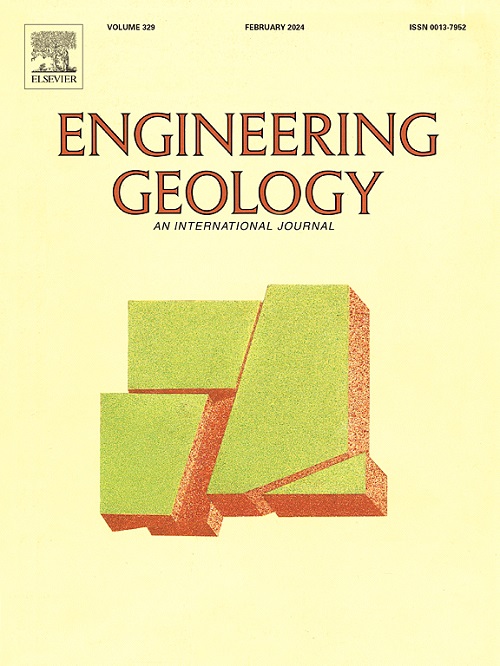Shaking table study on the seismic dynamic behavior of high-speed railway subgrade with pile network composite-reinforced soil
IF 6.9
1区 工程技术
Q1 ENGINEERING, GEOLOGICAL
引用次数: 0
Abstract
Pile network composite structures are used in the construction of high-speed railway subgrades. There have been few studies on their seismic dynamic response, however, which has restricted the accurate evaluation of their seismic performance. In this study, a series of shaking table tests on a pile network composite-reinforced soil high-speed railway subgrade were conducted. Particle image velocimetry was used to analyze the slope motion and sensor data to evaluate the overall dynamic response characteristics of the subgrade. Findings indicate that seismic activity causes subsidence throughout the subgrade, with deformations occurring in three distinct phases depending on the input seismic amplitude from 0.1 to 0.4 g (slow increasing), 0.4 to 0.6 g (faster increasing), and 0.6 to 1.0 g (rapidly increasing). The inclusion of geogrids aids in dissipating seismic energy, thereby reducing the peak acceleration amplification along the elevation. The increased dynamic soil pressure of the subgrade is mitigated by the geogrid reinforcement, which improves local stability. Moreover, the geogrid strain escalated with greater seismic wave amplitudes, resulting in the progressive expansion of the unstable zone from the slope towards the center of the subgrade as the elevation increased.
桩网复合加筋土高速铁路路基地震动力行为振动台研究
高速铁路路基建设中使用了桩网复合结构。然而,对其地震动力响应的研究很少,这限制了对其抗震性能的准确评估。本研究对桩网复合材料加固土壤高速铁路路基进行了一系列振动台试验。采用粒子图像测速仪分析坡面运动和传感器数据,以评估路基的整体动态响应特性。研究结果表明,地震活动会导致整个路基下沉,根据输入地震振幅的不同,变形分为三个不同的阶段:0.1 至 0.4 g(缓慢增加)、0.4 至 0.6 g(快速增加)和 0.6 至 1.0 g(快速增加)。土工格栅的加入有助于消散地震能量,从而减少峰值加速度沿高程的放大。土工格栅加固减轻了路基动土压力的增加,从而提高了局部稳定性。此外,土工格栅应变随着地震波振幅的增大而增加,导致不稳定区随着标高的增加从斜坡向路基中心逐渐扩大。
本文章由计算机程序翻译,如有差异,请以英文原文为准。
求助全文
约1分钟内获得全文
求助全文
来源期刊

Engineering Geology
地学-地球科学综合
CiteScore
13.70
自引率
12.20%
发文量
327
审稿时长
5.6 months
期刊介绍:
Engineering Geology, an international interdisciplinary journal, serves as a bridge between earth sciences and engineering, focusing on geological and geotechnical engineering. It welcomes studies with relevance to engineering, environmental concerns, and safety, catering to engineering geologists with backgrounds in geology or civil/mining engineering. Topics include applied geomorphology, structural geology, geophysics, geochemistry, environmental geology, hydrogeology, land use planning, natural hazards, remote sensing, soil and rock mechanics, and applied geotechnical engineering. The journal provides a platform for research at the intersection of geology and engineering disciplines.
 求助内容:
求助内容: 应助结果提醒方式:
应助结果提醒方式:


